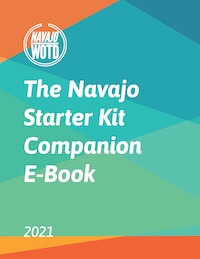níłch'i naalkidí
television, tv
nih-lth chih nahl kid dih
The first part of this phrase refers to something that is carried by air — common translations are “air” itself and “spirit”. The latter part is a combination of particles that each approximate to “seen with the eyes” and “that which is moving”.
Together, the phrase in its entirety is understood to mean television. So, you could say it literally means “air movie”. If this is confusing to you, just think about tv stations that were broadcasted over the air, as opposed to the newer cable tv and internet tv. The television set is the physical manifestation of these “air movies” so it inherits this name. But today, most Navajo people just call any television set níłch’i naalkidí.
Have a great Nda’iiníísh, and weekend!
